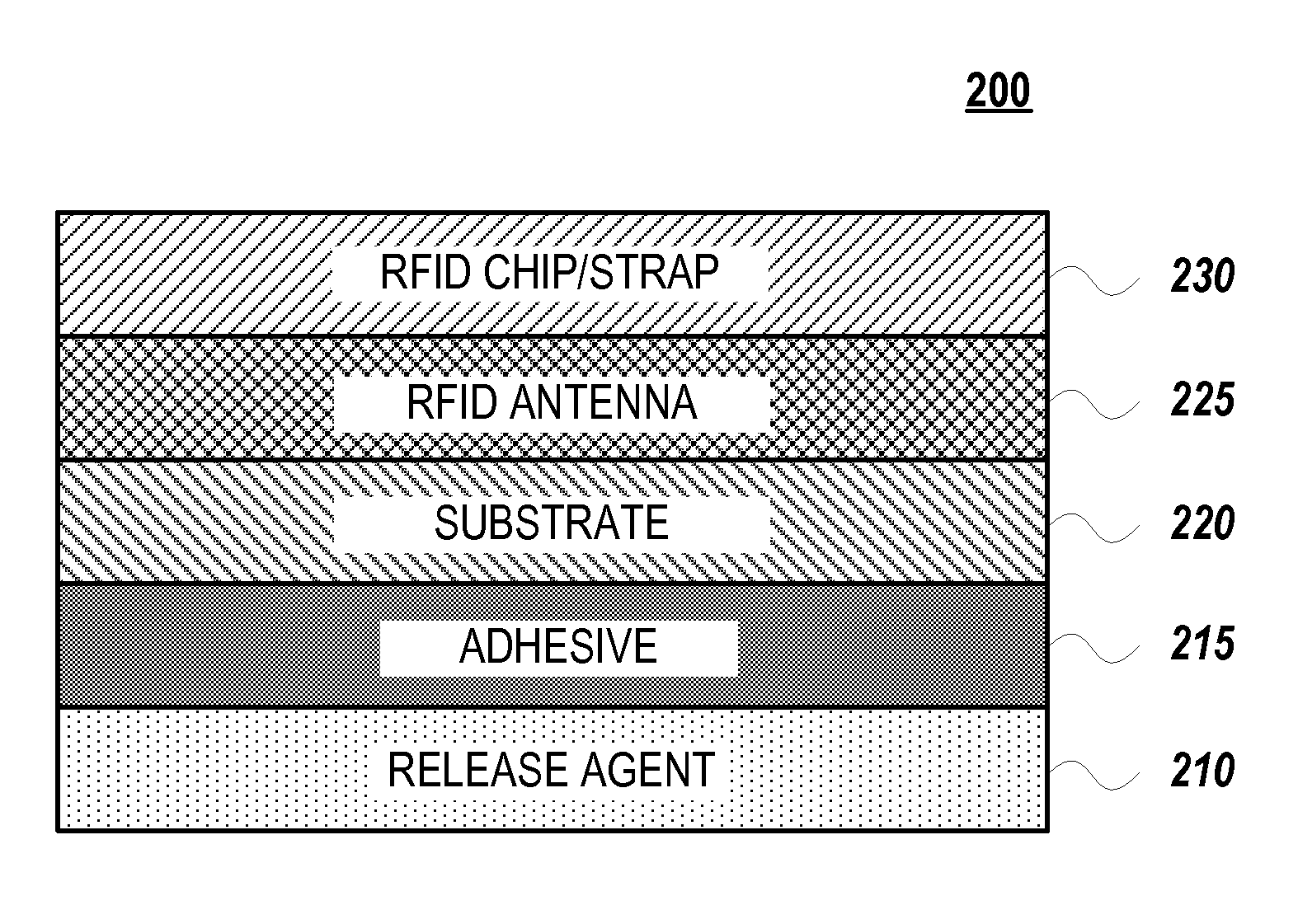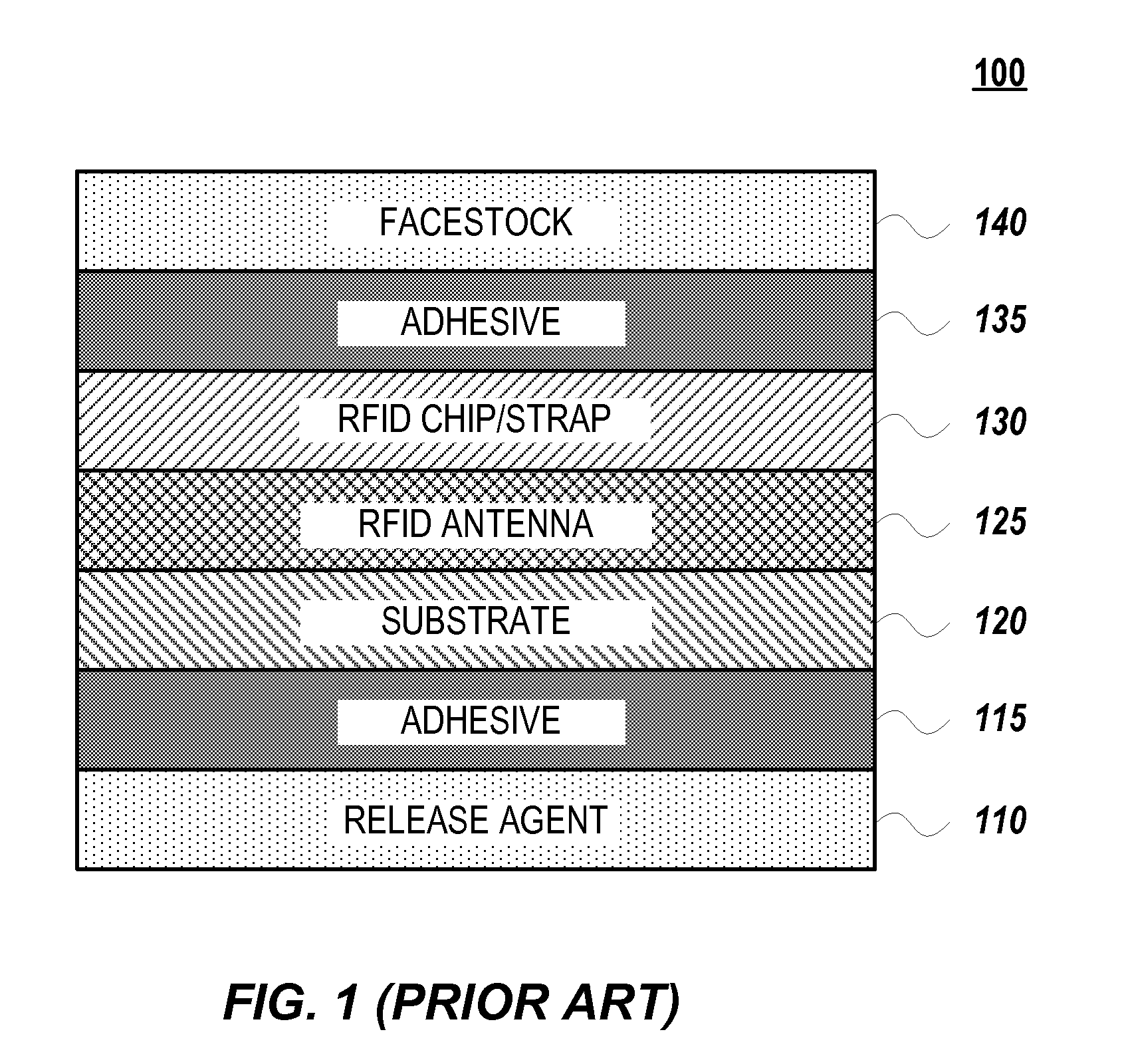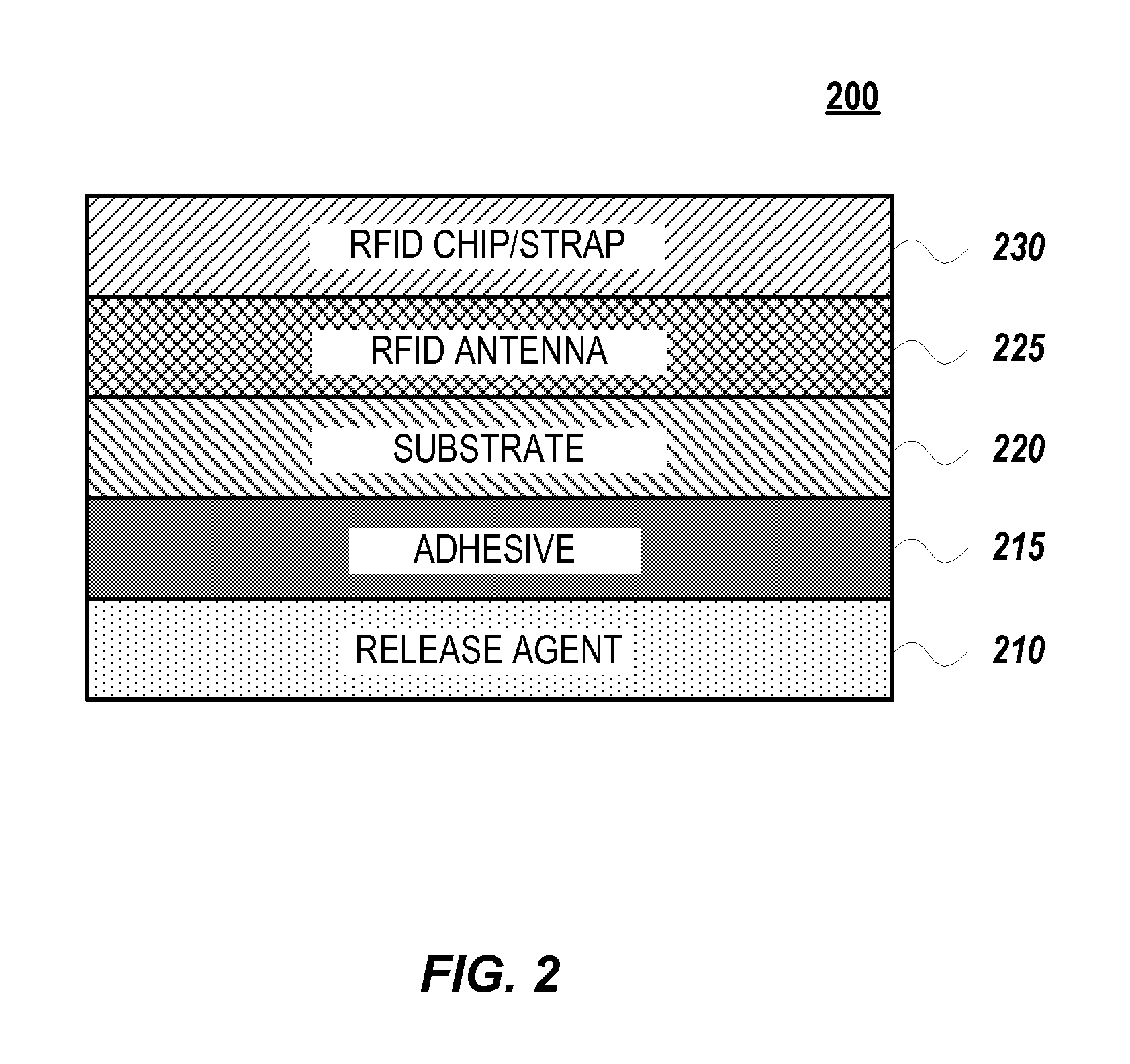RFID Smart Label with Reduced Layers and Method of Production
- Summary
- Abstract
- Description
- Claims
- Application Information
AI Technical Summary
Benefits of technology
Problems solved by technology
Method used
Image
Examples
Embodiment Construction
[0049]Embodiments of the present invention include RFID smart tags and labels with fewer layers that can be manufactured using roll to roll processing. Embodiments of the present invention also include methods for making RFID smart tags and labels having fewer layers. RFID smart tags and labels include layered structures where the facestock and facestock adhesive layers illustrated in FIG. 1 have been removed and a depression / recession region is provided to make room for the RFIC or RFID chip / strap. The RFID chip / strap is positioned within the depression / recession region so that graphics or information normally contained on the facestock can be printed directly onto the RFID chip / strap. Methods for making both conventional RFID tags and RFID smart tags and labels, in accordance with embodiments of the invention, include first impressing a pattern on a surface of a substrate to make a first portion of the substrate have a positive image of the RFID antenna and a second portion of the...
PUM
 Login to View More
Login to View More Abstract
Description
Claims
Application Information
 Login to View More
Login to View More - R&D
- Intellectual Property
- Life Sciences
- Materials
- Tech Scout
- Unparalleled Data Quality
- Higher Quality Content
- 60% Fewer Hallucinations
Browse by: Latest US Patents, China's latest patents, Technical Efficacy Thesaurus, Application Domain, Technology Topic, Popular Technical Reports.
© 2025 PatSnap. All rights reserved.Legal|Privacy policy|Modern Slavery Act Transparency Statement|Sitemap|About US| Contact US: help@patsnap.com



